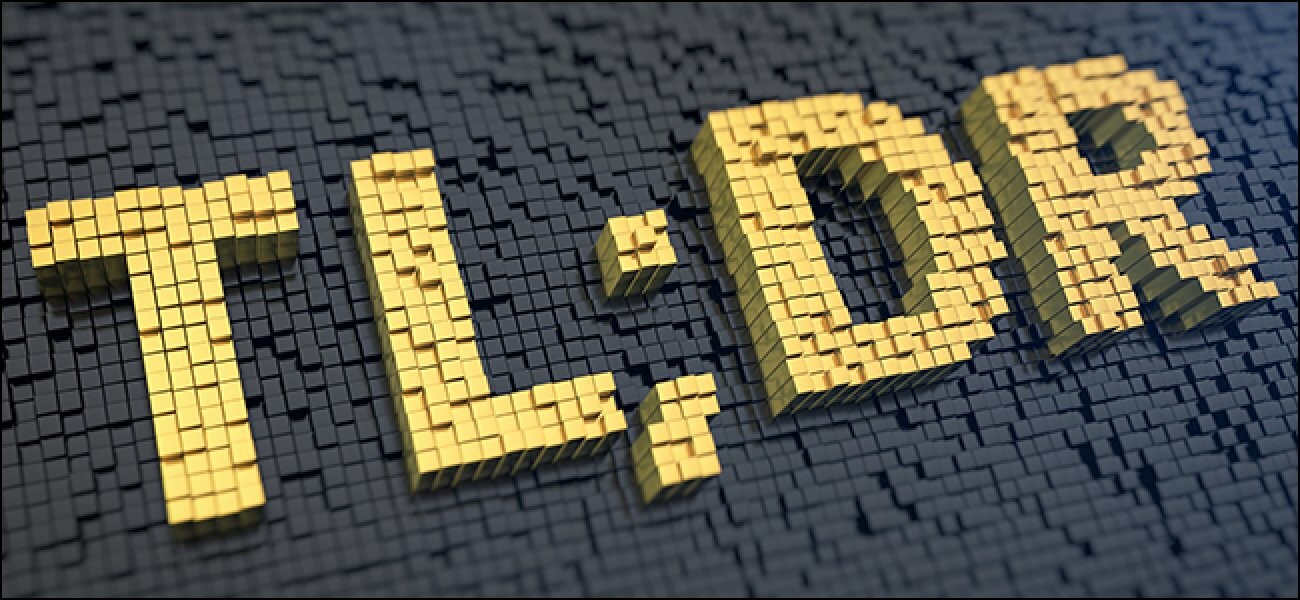@cstross See here for the stats: https://toot.berlin/@sbi/112235865952642075
Apparently, PV grows faster than all the other electricity producers combined.
Posts
-
Two key turning points were passed in the 2022-24 period -
In spring 2022, after having been in one too many discussions about batteries, energy storage, and renewable share in energy grids, I decided to write a Twitter 🧵 on the subject, trying to collect what I have learned in the last decade. I think it's h...Because nuclear power keeps being brought up in the replies:
Technically, I know very little about NPPs. AFAIK, they can change their output power only slowly and hence cannot provide primary control. So in this regard they are not different from renewables.
And I already said so in the thread: nuclear installation is *way* too slow to compete with renewables. ATM, the PV power installed globally rises more than twice as fast as everything else *combined*. Nuclear is minuscule compared to that.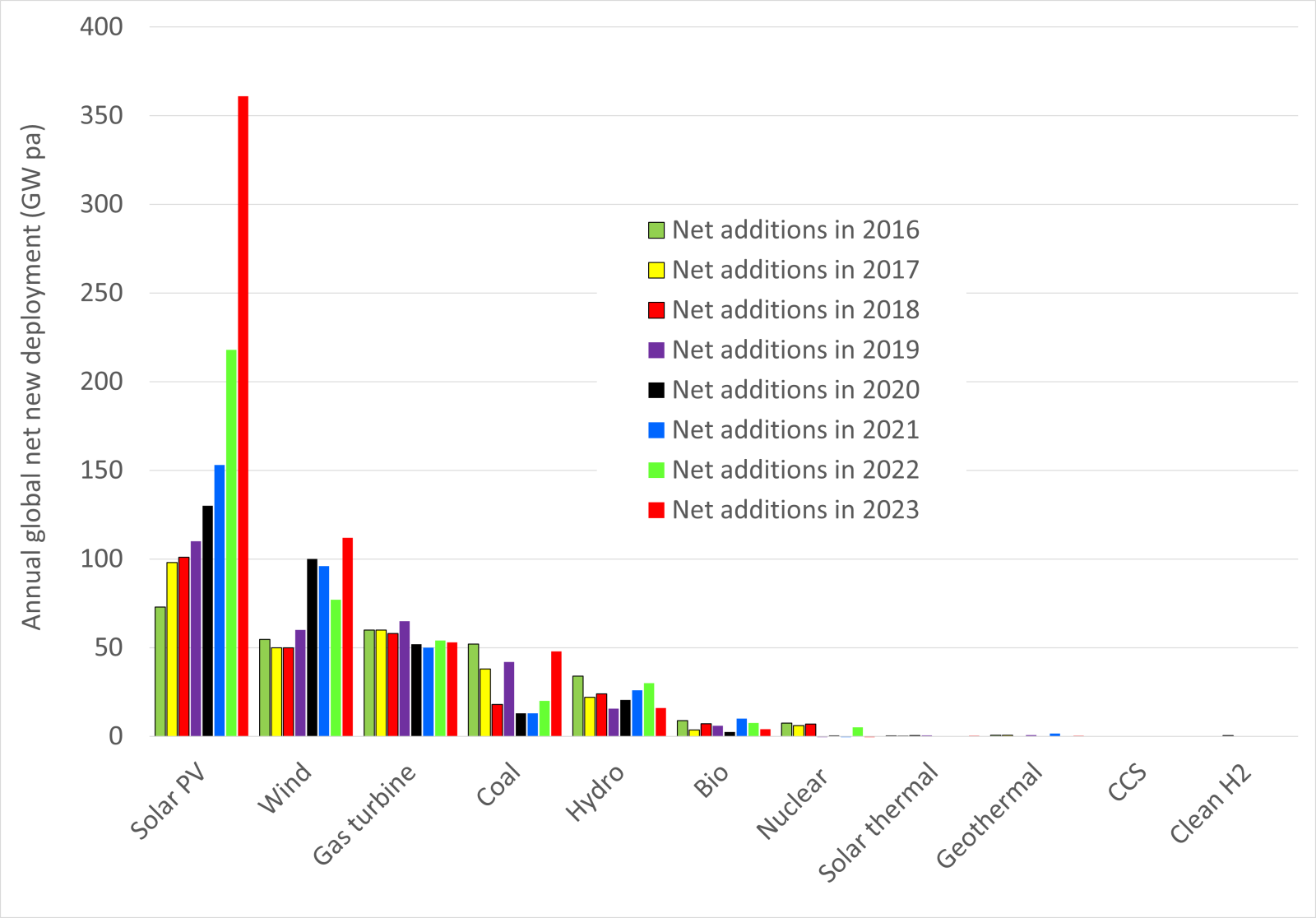
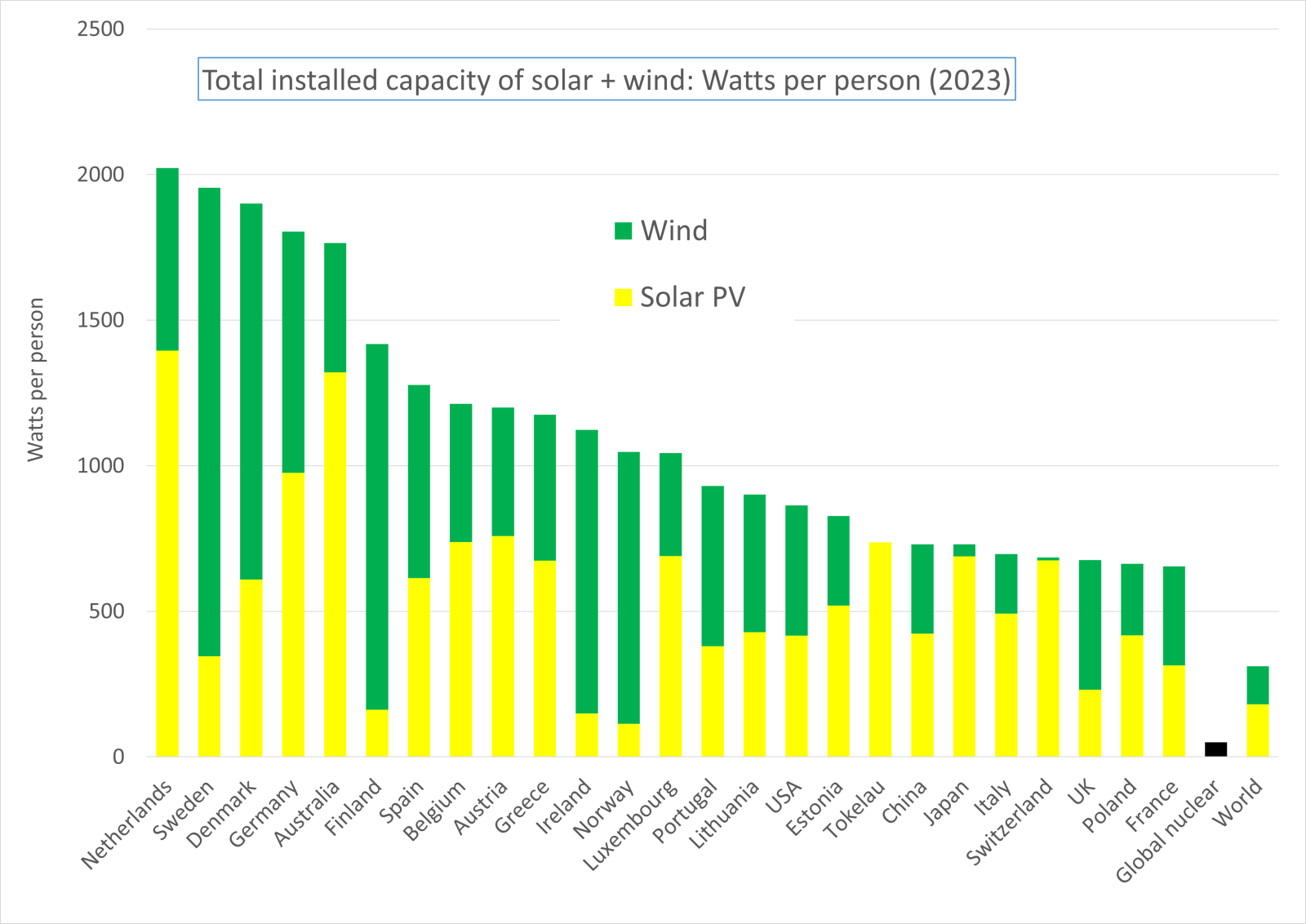
-
In spring 2022, after having been in one too many discussions about batteries, energy storage, and renewable share in energy grids, I decided to write a Twitter 🧵 on the subject, trying to collect what I have learned in the last decade. I think it's h...Thanks for reading all the way down here!
I am looking for a better job, BTW: https://toot.berlin/@sbi/110491545613352166
-
In spring 2022, after having been in one too many discussions about batteries, energy storage, and renewable share in energy grids, I decided to write a Twitter 🧵 on the subject, trying to collect what I have learned in the last decade. I think it's h...Addendum: I simplified things to the point where electrical engineers and battery chemists might feel physical pain. I have not talked about generator and battery chemistry inertia, active/reactive/apparent power, inverters being able to do both grid-forming or -following, genset synchronization, the dark art of black-starting grids, and lots of other stuff. I skipped this partly because I deemed it unnecessary to get the big picture, and partly because I know too little about it.
I apologize. -
In spring 2022, after having been in one too many discussions about batteries, energy storage, and renewable share in energy grids, I decided to write a Twitter 🧵 on the subject, trying to collect what I have learned in the last decade. I think it's h...For the last 10 years I have been paid for writing code which controls AC batteries (DC batteries plus inverter) or whole grids with fossil fuel, wind, PV, and batteries. I have seen small containers with a single 100kWh battery and 50MWh battery power plants. Some support tiny microgrids, like the backup power for a small hospital, some support whole islands cutting their diesel consumption down to 20%, and some of them provide primary control to some of Europe's biggest national power grids.
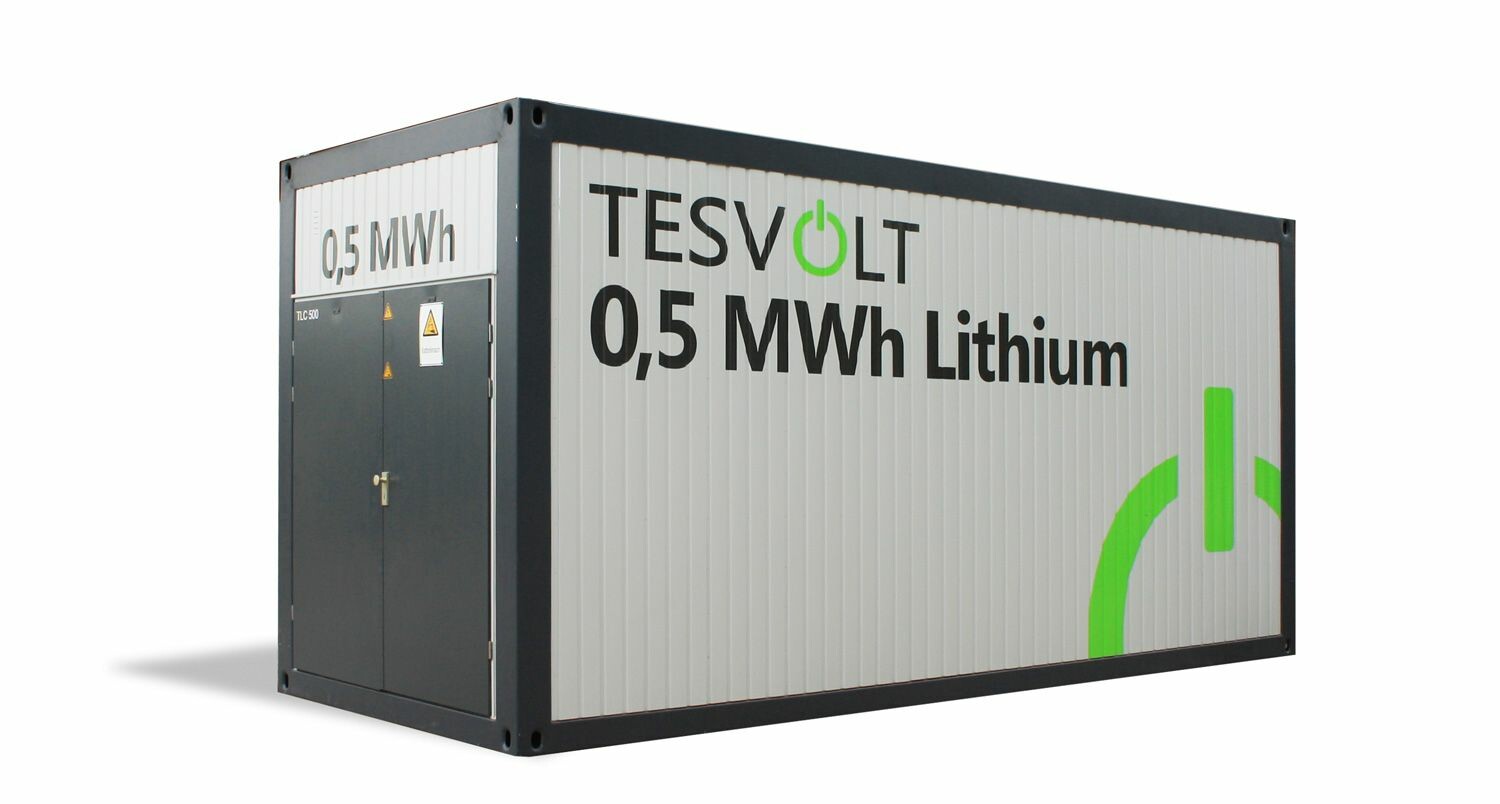
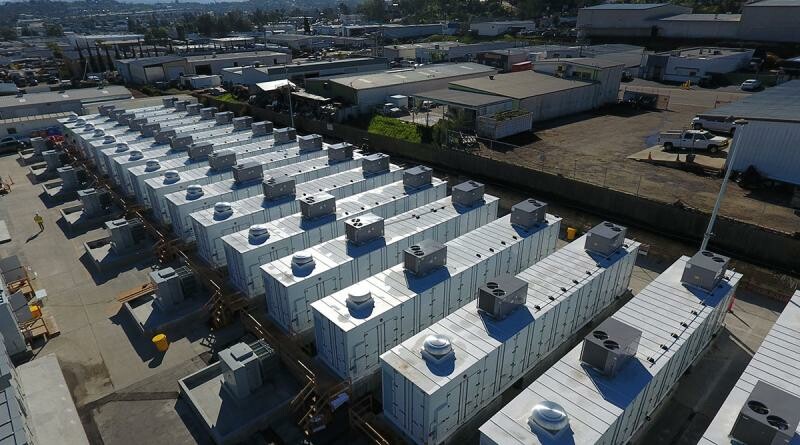
-
In spring 2022, after having been in one too many discussions about batteries, energy storage, and renewable share in energy grids, I decided to write a Twitter 🧵 on the subject, trying to collect what I have learned in the last decade. I think it's h...Let me reiterate: By putting up wind and PV farms, and hooking up battery power plants to our grid, we can significantly reduce our fossil fuel usage *at a profit* within just a few years. This is proven technology, which has been in the field for years or decades, and comes at a relatively low safety risk. (Compare this to nuclear power plants, which are rather expensive, take a decade or two to build, and take whole nations as backup to get insured because of the risk of a meltdown.)
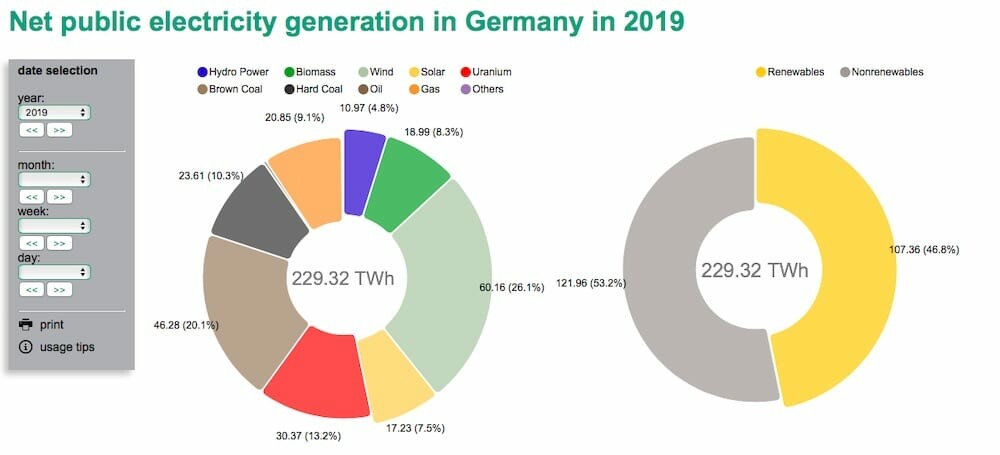
-
In spring 2022, after having been in one too many discussions about batteries, energy storage, and renewable share in energy grids, I decided to write a Twitter 🧵 on the subject, trying to collect what I have learned in the last decade. I think it's h...So you need to keep some of your generators as backup because fossil fuel can be stored cheaply and almost without losses, but you get to turn them off for long stretches, significantly reducing fossil fuel use and mechanical wear on them. So, by using batteries, you can increase the renewable share in your grid, thereby helping to save this planet.
And to top it all off you also save money! In fact, there are companies making a profit by selling this technology to other companies.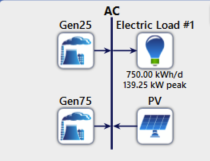
-
In spring 2022, after having been in one too many discussions about batteries, energy storage, and renewable share in energy grids, I decided to write a Twitter 🧵 on the subject, trying to collect what I have learned in the last decade. I think it's h...But you cannot charge a fully charged 5MWh battery any further and will only ever get <5MWh out of it. And once discharged, you need electricity to charge it again, rather than just refilling a tank. Plus, batteries have a much lower energy density than fossil fuel. The latter is why most batteries are not well suited for storing considerable amounts of energy: A 10MWh battery plant is the size of a school's gym, while a 1MW diesel generator plus 10h worth of fuel easily fit into 1–2 containers.
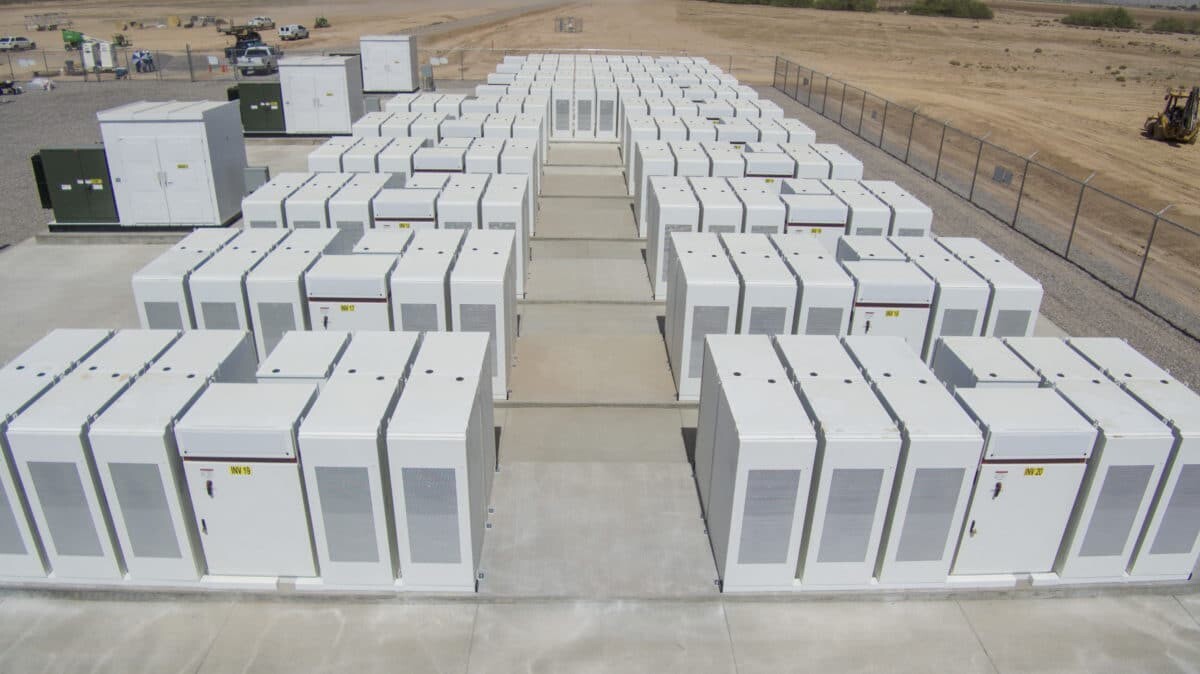
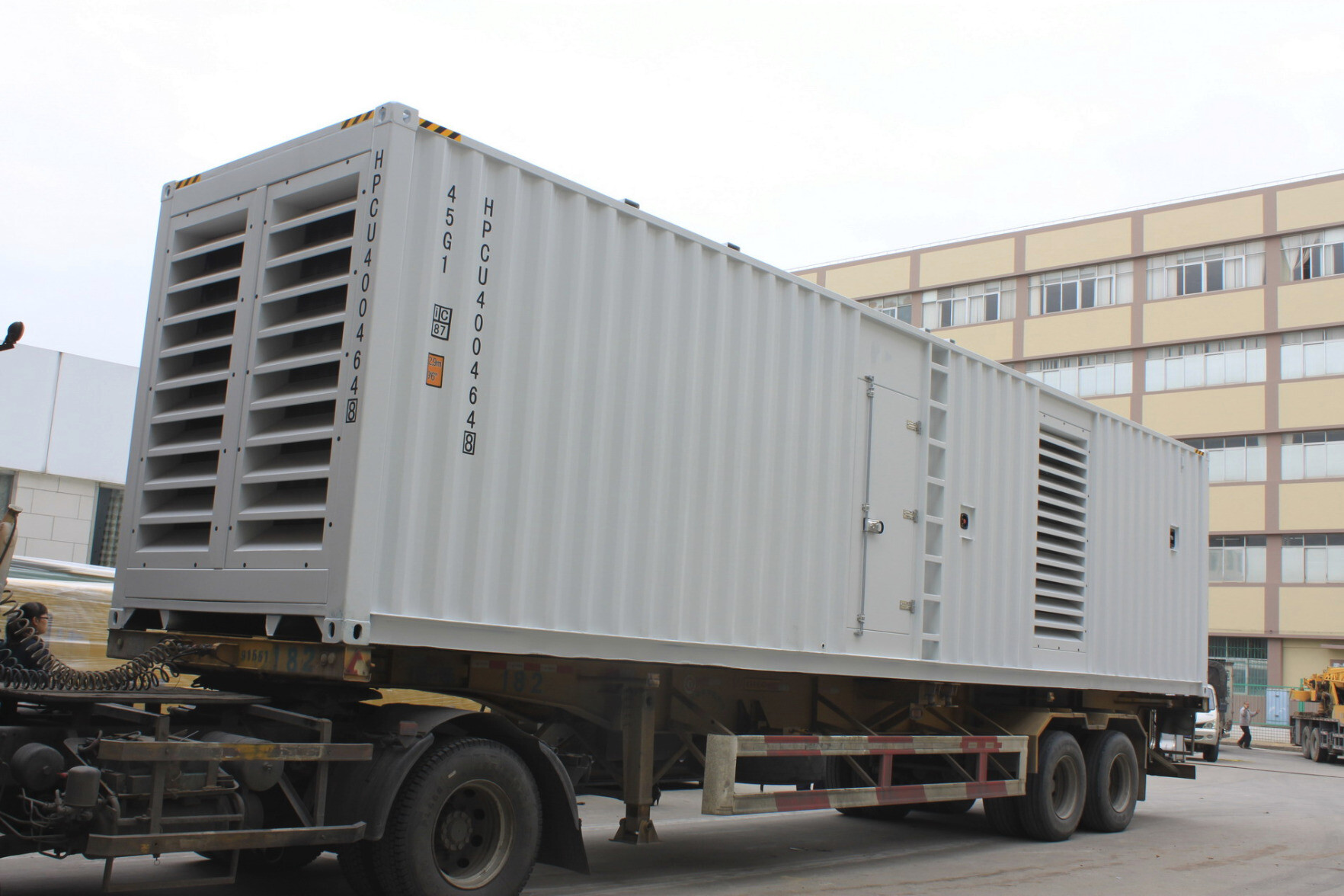
-
In spring 2022, after having been in one too many discussions about batteries, energy storage, and renewable share in energy grids, I decided to write a Twitter 🧵 on the subject, trying to collect what I have learned in the last decade. I think it's h...As long as batteries have capacity to charge or discharge, they can do both at any power you want to (up to their maximum power), so they can actually replace your generators, create and maintain a grid, and control their power according to demand. So you can actually turn off those fossil fuel monsters!
And by charging, batteries can provide "negative power". Your minimum idling power is now negative, which means you can suck up excess PV power, and feed it back into the grid later!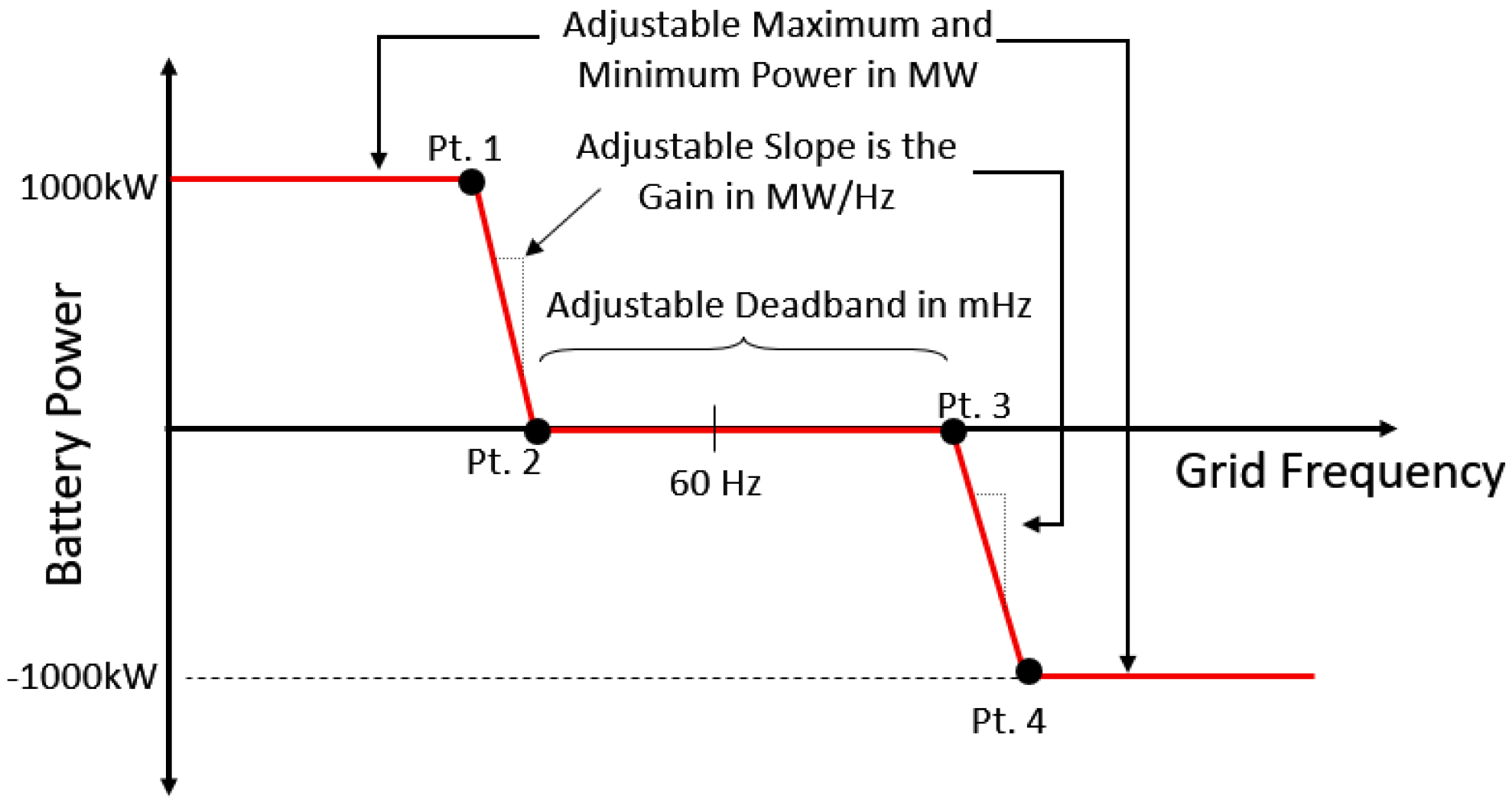
-
In spring 2022, after having been in one too many discussions about batteries, energy storage, and renewable share in energy grids, I decided to write a Twitter 🧵 on the subject, trying to collect what I have learned in the last decade. I think it's h...Important properties of batteries are their lifetime (number of charging/discharging cycles), the amount of energy they can store, the power with which they can charge/discharge, and the relation between the latter two, the C rate. The limitations of the inverter as well as the battery chemistry are responsible for all these factors. Nowadays, mostly Lithium ion batteries are connected to grids. They provide high C rates and less storage capacity decrease per charge cycle than other batteries.
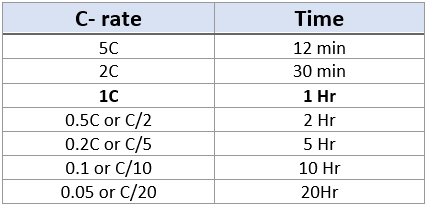
-
In spring 2022, after having been in one too many discussions about batteries, energy storage, and renewable share in energy grids, I decided to write a Twitter 🧵 on the subject, trying to collect what I have learned in the last decade. I think it's h...Enter batteries. Here, we use the term for chemical assets which can consume power from your grid by charging, and supply power to the grid by discharging. They charge/discharge only DC, though, while our grids are AC. So, like with PV power, you need to connect a string of batteries to the grid through a inverter which converts between AC/DC. Battery inverters are grid-forming.
The combination of a string of batteries and an inverter is called an "AC battery" and controlled as a singular asset.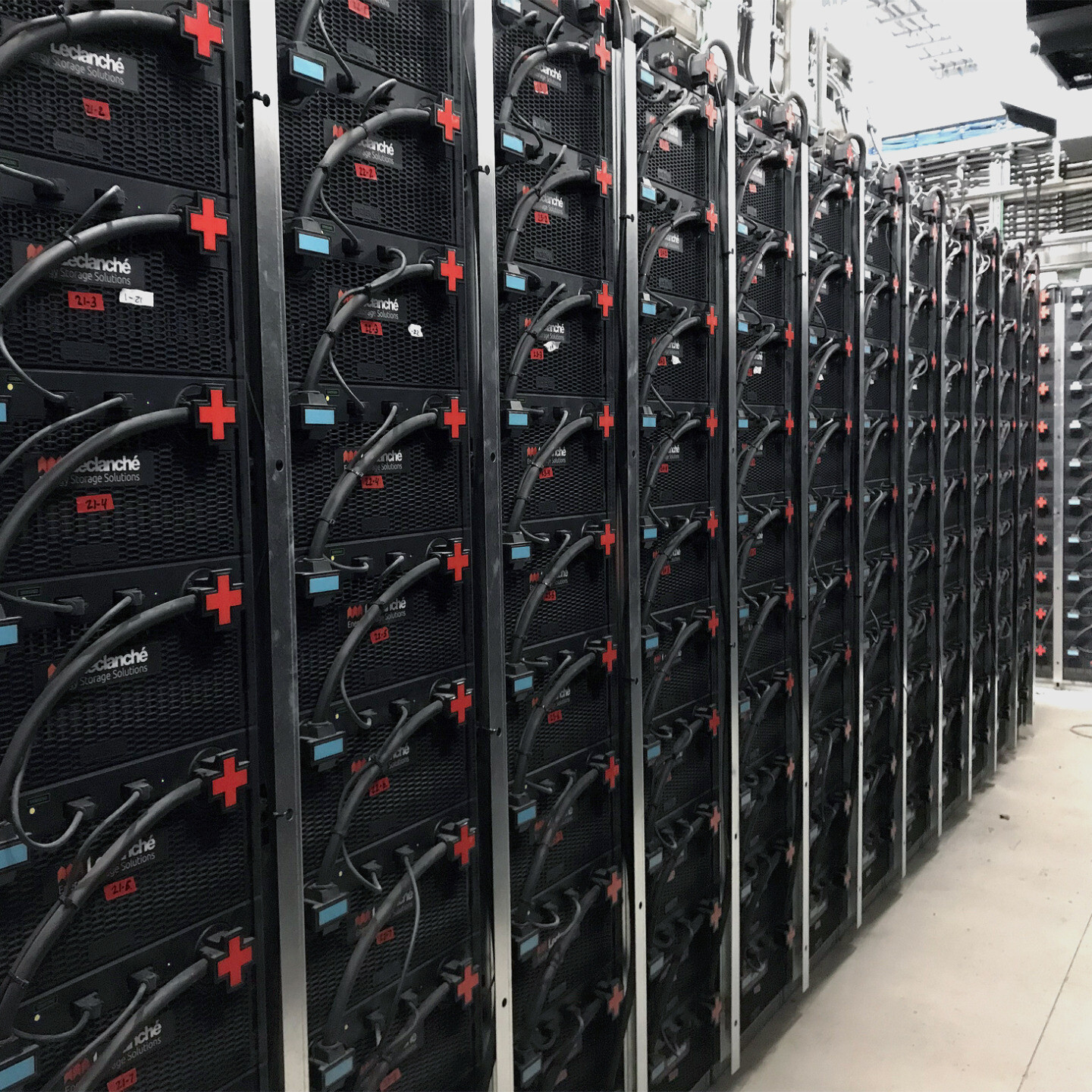
-
In spring 2022, after having been in one too many discussions about batteries, energy storage, and renewable share in energy grids, I decided to write a Twitter 🧵 on the subject, trying to collect what I have learned in the last decade. I think it's h...But there's more: Combustion engines have their ideal operating point. You usually want to run them close to where they are most efficient and stress and wear is lowest, to minimize their costs.
So you need to balance a lot of variables. What you do in this situation depends on many factors: What are the exact numbers we are talking here? What risks can we take? Is this a microgrid for a weekend home or the power supply for a metropolitan area, with hospitals, traffic lights, and subways?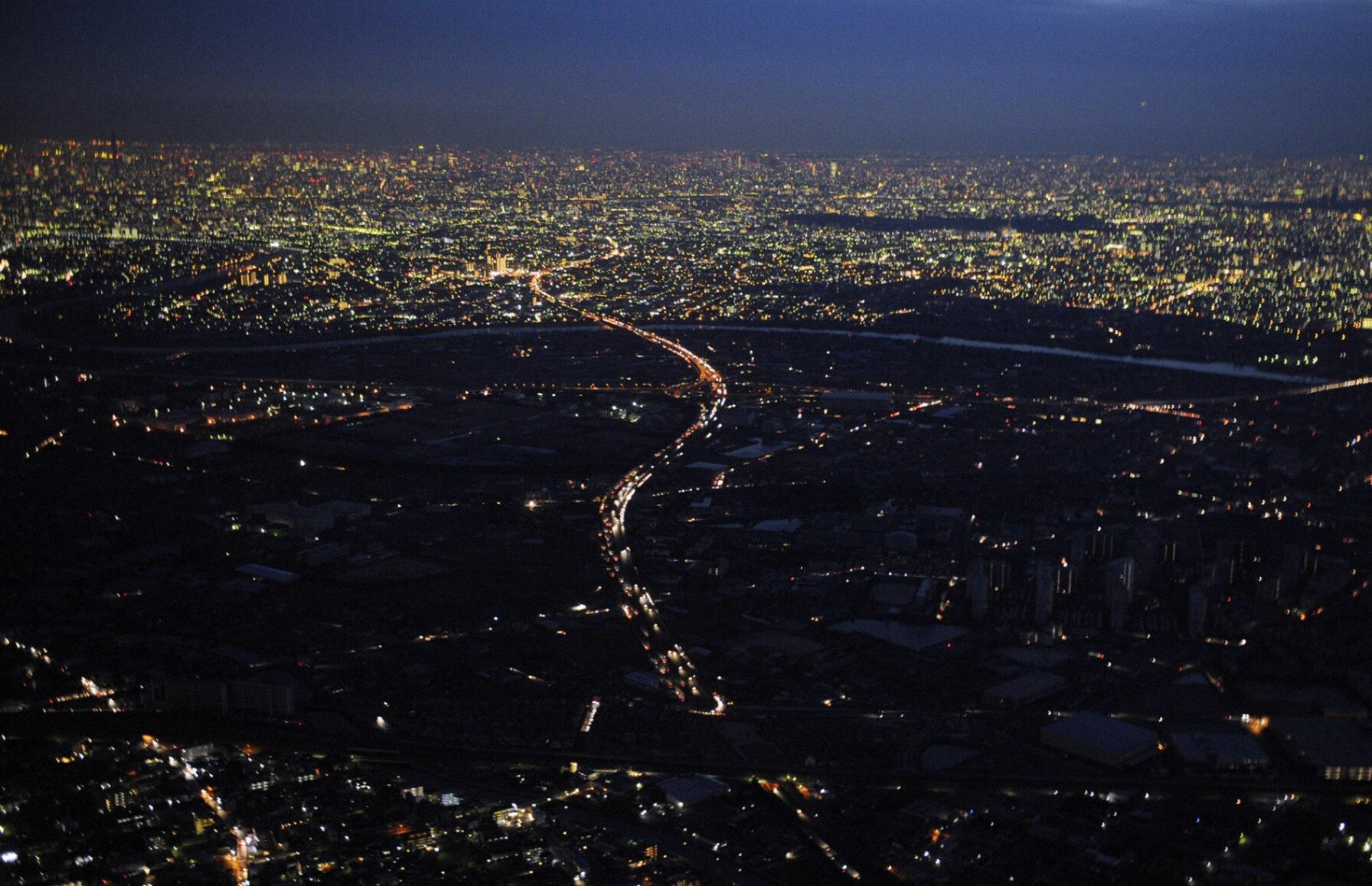
-
In spring 2022, after having been in one too many discussions about batteries, energy storage, and renewable share in energy grids, I decided to write a Twitter 🧵 on the subject, trying to collect what I have learned in the last decade. I think it's h...The minimum power of all your generators might well be higher than 40% of your demand. You could curtail the output of your PV panels so that they can never produce more than what your idling generators do not provide for the current demand. But then you throw away power provided by the sun for free, and use fossil fuel instead. ("Excess renewables" in this diagram.)
Or you could turn off some of the generators and risk not having enough generators running to compensate for sudden fluctuations.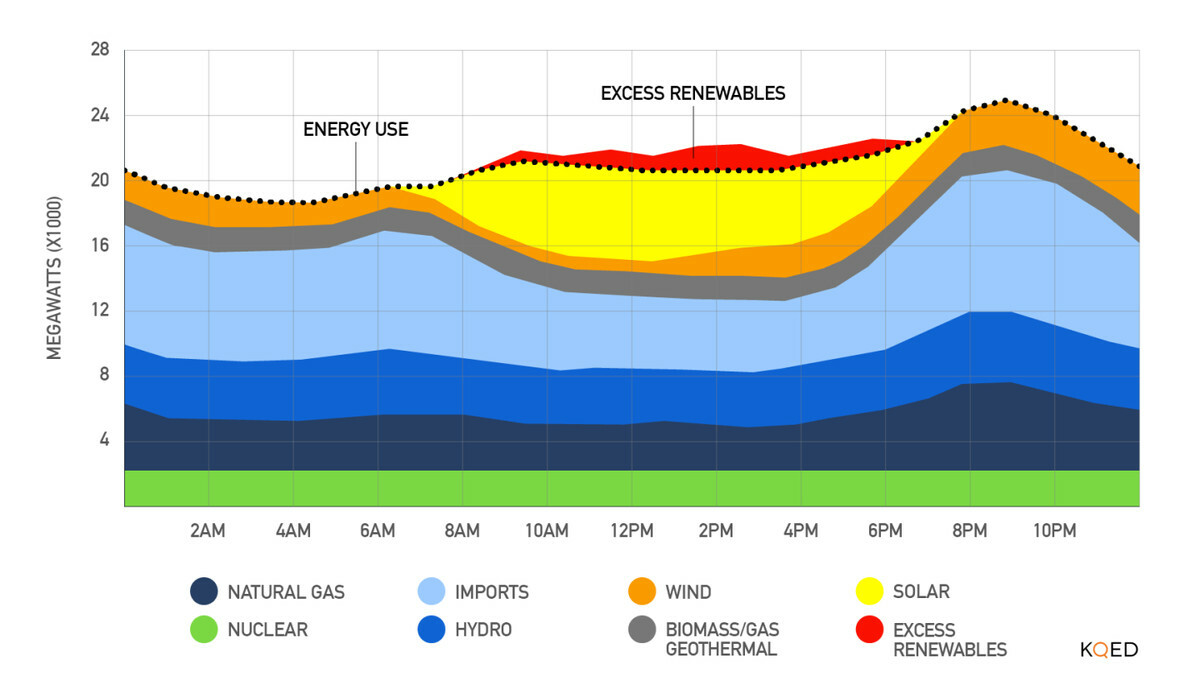
-
In spring 2022, after having been in one too many discussions about batteries, energy storage, and renewable share in energy grids, I decided to write a Twitter 🧵 on the subject, trying to collect what I have learned in the last decade. I think it's h...On a sunny day, only 40% of your fossil fuel generator capacity is needed, but if some dark clouds come by, you might suddenly need 80% of it. And you need to be prepared, because cloud cover changes within minutes or seconds.
However, rotating generators might need considerable time to startup and shutdown, so in order for a generator to quickly take over, it needs to already be running. But they usually have a minimum power output, and that might be considerable.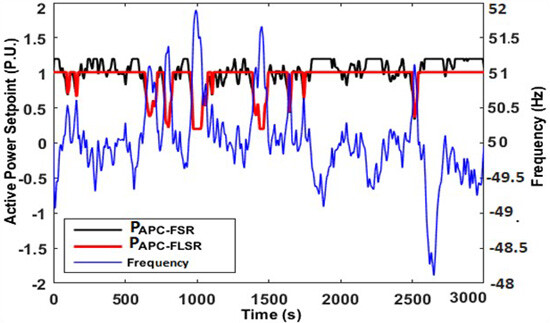
-
In spring 2022, after having been in one too many discussions about batteries, energy storage, and renewable share in energy grids, I decided to write a Twitter 🧵 on the subject, trying to collect what I have learned in the last decade. I think it's h...So PV panels provide as much energy as they can and leave the rotating masses to sort out the rest.
But this is fine only if you have a relatively small amount of this unregulated power in your grid, and the generators can compensate for any fluctuations in variable supply. If you have enough PV to provide up to, say, 60% of your demand, with the actual amount varying between 20% and 60%, your generators need to provide between 40–80% of the energy. Things might get much more complicated then.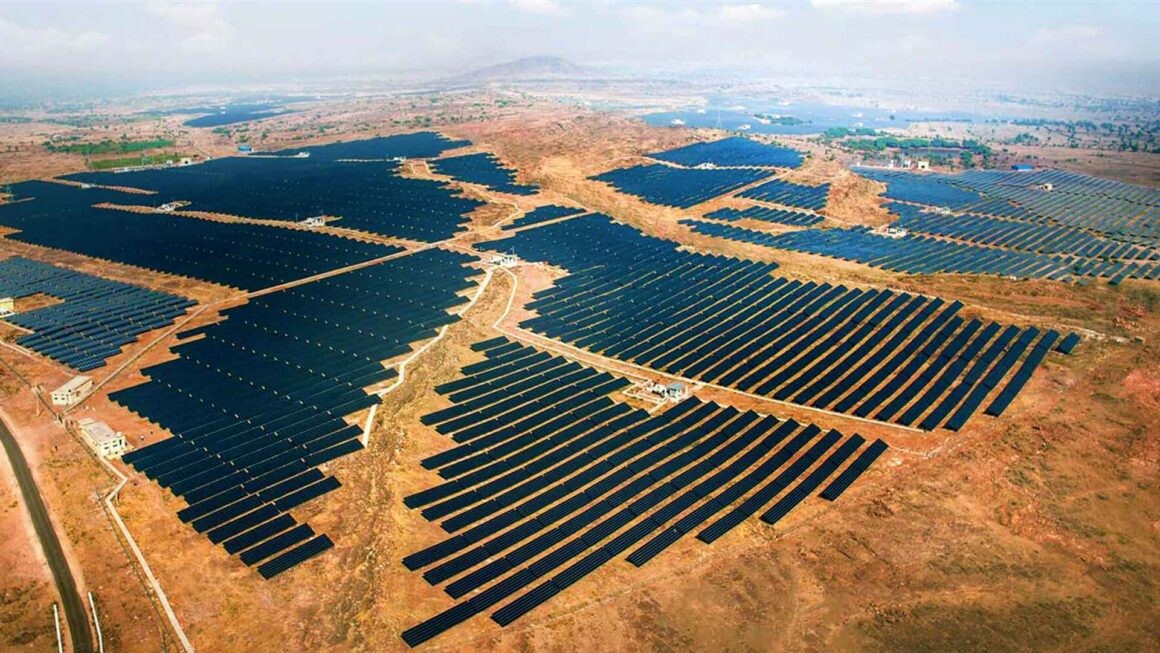
-
In spring 2022, after having been in one too many discussions about batteries, energy storage, and renewable share in energy grids, I decided to write a Twitter 🧵 on the subject, trying to collect what I have learned in the last decade. I think it's h...Now let's add a bunch of photo-voltaic (PV) panels with AC inverters to the mix. Those are *variable* power providers: Their output changes according to *supply*, not to *demand*. Supply depends on latitude, time of day/year, cloud cover, and other factors. PV inverters (usually) cannot *create* a grid. Other ("grid-forming") generators need to have done this first. ("Grid-following") PV inverters can then sync to that existing grid, adapting their frequency and phasing to it.
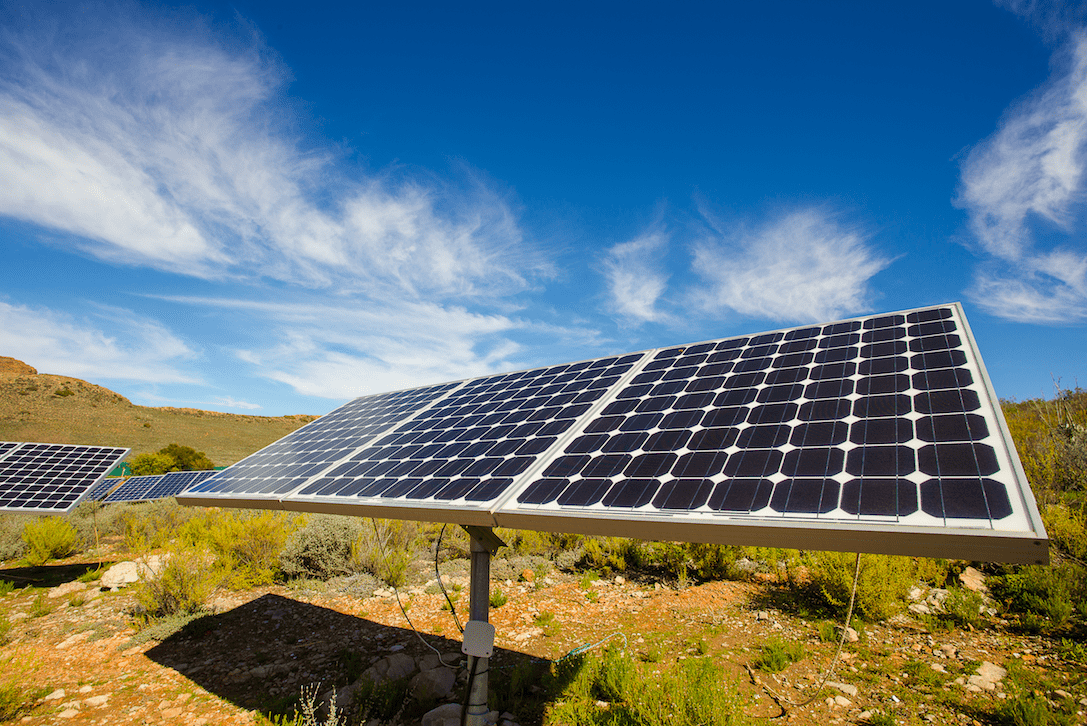
-
In spring 2022, after having been in one too many discussions about batteries, energy storage, and renewable share in energy grids, I decided to write a Twitter 🧵 on the subject, trying to collect what I have learned in the last decade. I think it's h...Increase fuel usage when the frequency is going down, reduce it if it is going up, so you always provide exactly the power needed. This is generally called primary control (or frequency response): an immediate response to demand fluctuations, fast enough to be practically instantaneous. What's more, communicating this through the grid frequency allows generators to organize power distribution: As long as the frequency is off, all generators will try to compensate to the best of their abilities.
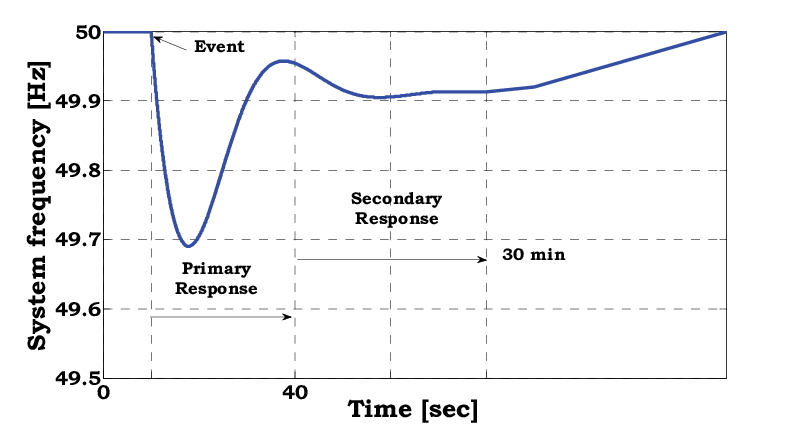
-
In spring 2022, after having been in one too many discussions about batteries, energy storage, and renewable share in energy grids, I decided to write a Twitter 🧵 on the subject, trying to collect what I have learned in the last decade. I think it's h...Traditionally, electrical power is provided by big rotating masses. Steam, oil, diesel, or gas generators turn coils in magnetic fields, which creates an AC current in the coils. Their turning speed determines the grid's frequency. If too much energy is drawn from them, they get slower, if it is too little, they get faster. Machines have used centrifugal governors to regulate their speed at least since Watt invented his steam engine, so controlling rotation speed is a solved problem:
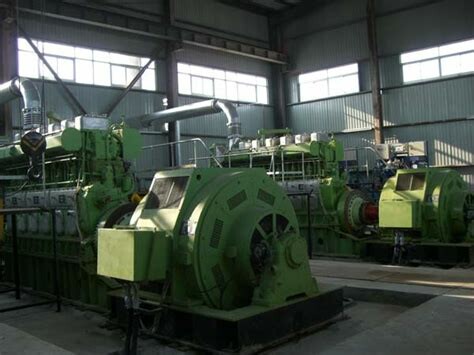
-
In spring 2022, after having been in one too many discussions about batteries, energy storage, and renewable share in energy grids, I decided to write a Twitter 🧵 on the subject, trying to collect what I have learned in the last decade. I think it's h...Disclaimer: While I have been writing code in this domain for a decade, I am not an electrical engineer and mostly only learned what I needed on the job. Electrical engineering is complicated, people spend years studying it, and there is no way I could cram everything needed into this thread even if I knew it all—which I absolutely do not. So I have to oversimplify things. Dear electrical engineers, reading this might physically hurt you. I apologize.
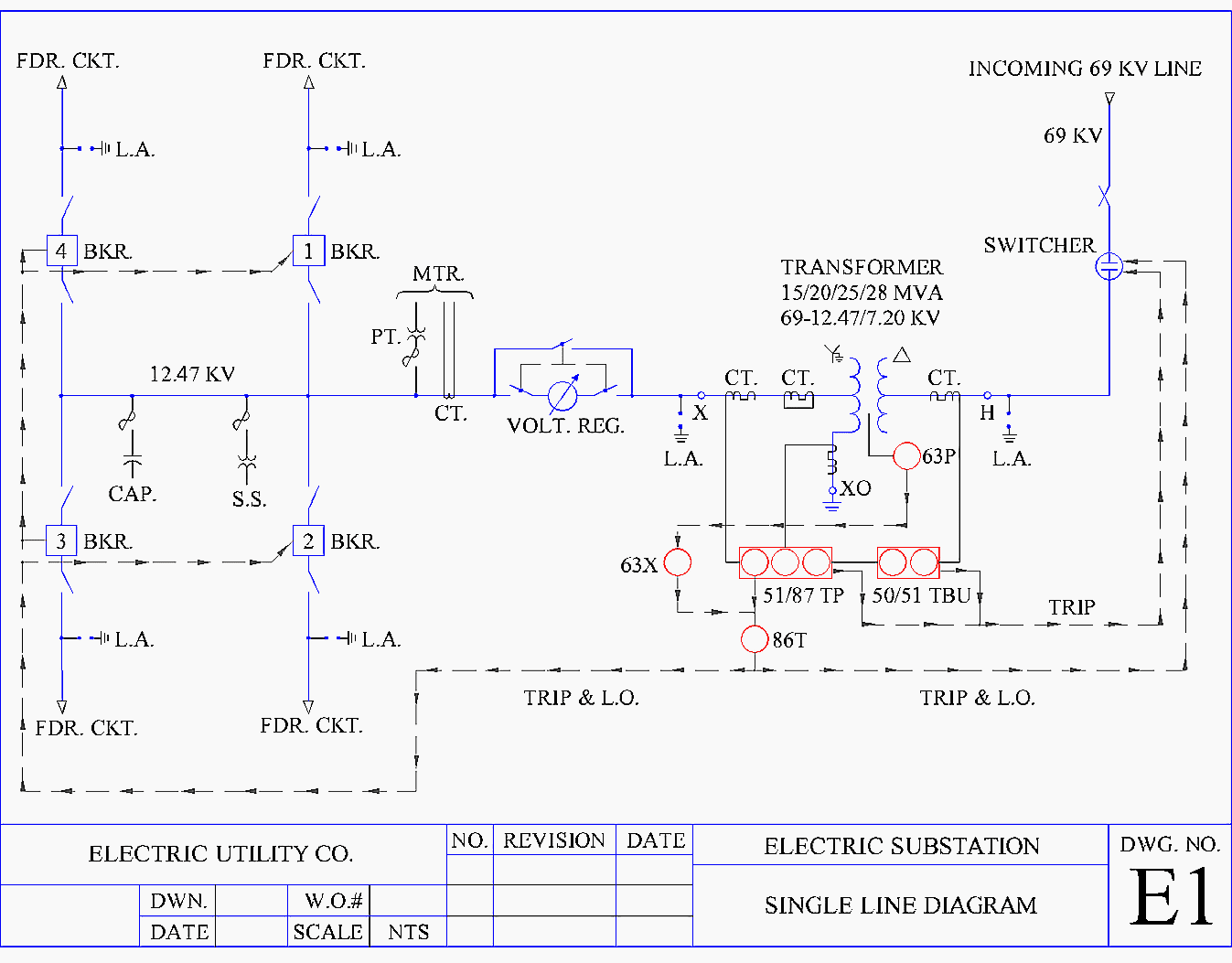
-
In spring 2022, after having been in one too many discussions about batteries, energy storage, and renewable share in energy grids, I decided to write a Twitter 🧵 on the subject, trying to collect what I have learned in the last decade. I think it's h...The TL;DR:
i) Due the need to do primary control (frequency response), a 100% renewable grid is impossible. You need either combustion engines or batteries to run your grid.
ii) Batteries are not great for storing significant amounts of energy, but they are very well suited for frequency response.